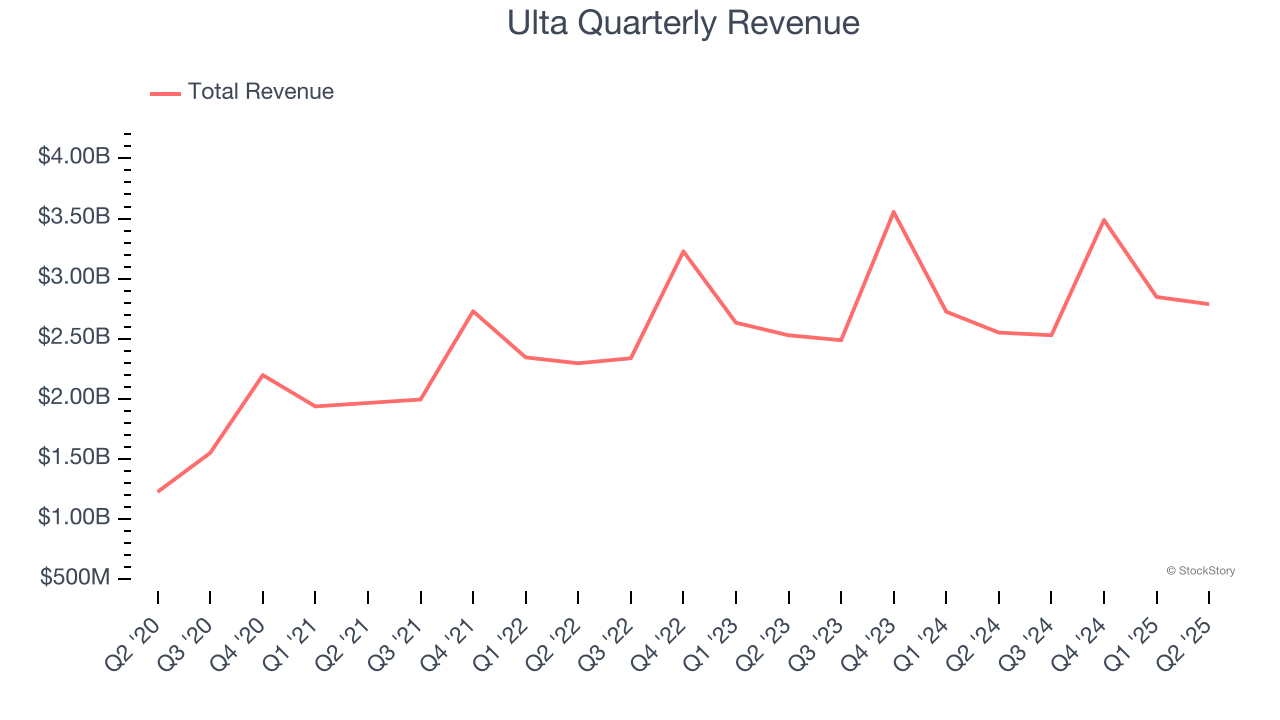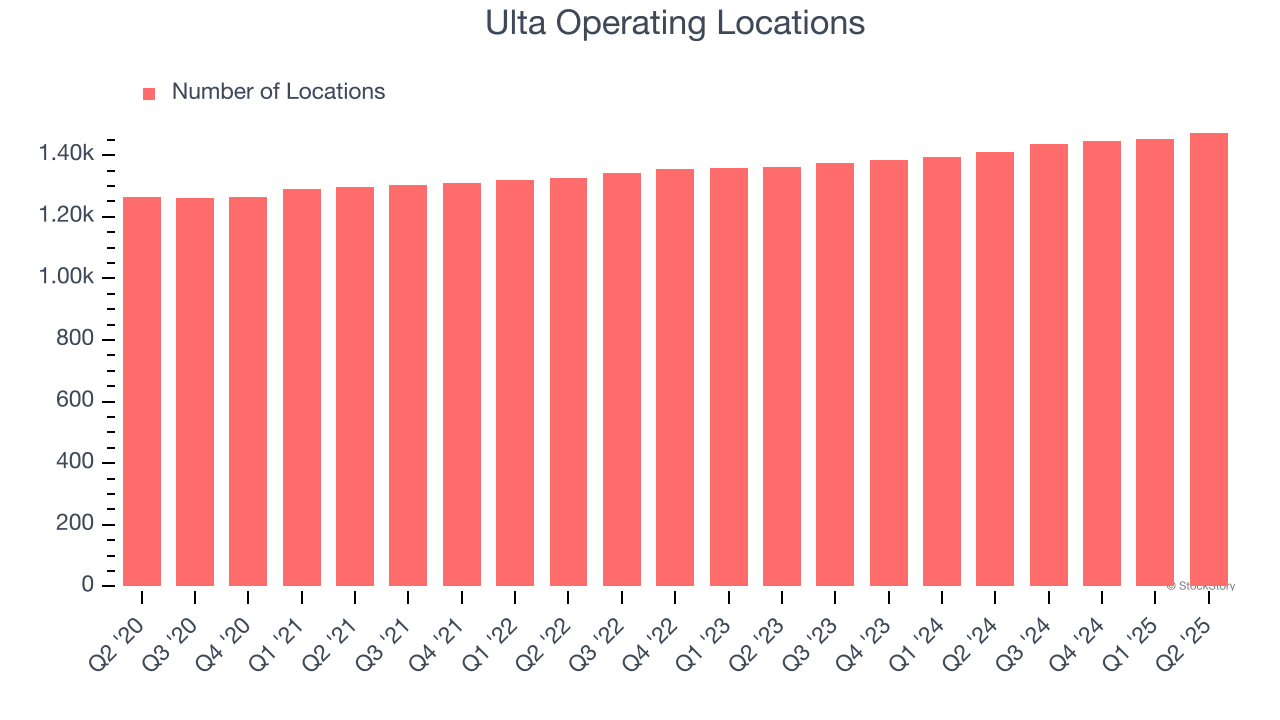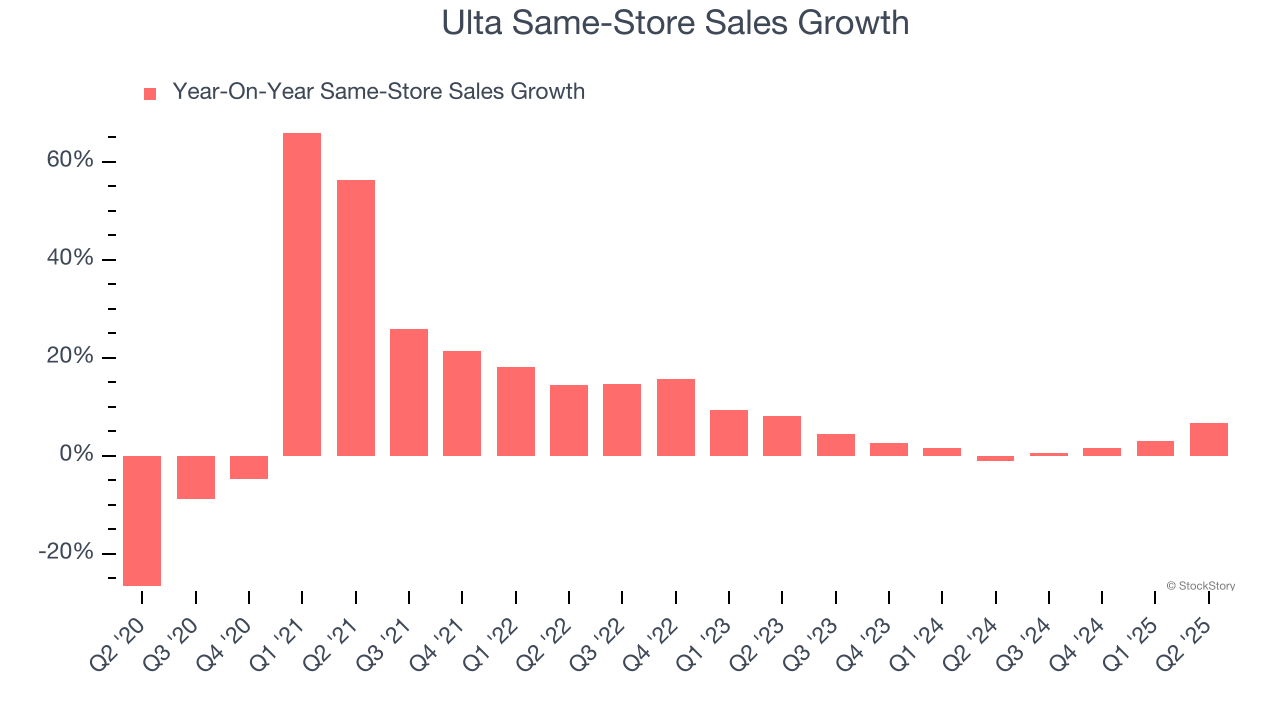
Beauty, cosmetics, and personal care retailer Ulta Beauty (NASDAQ: ULTA) reported Q2 CY2025 results exceeding the market’s revenue expectations, with sales up 9.3% year on year to $2.79 billion. The company’s full-year revenue guidance of $12.05 billion at the midpoint came in 2.8% above analysts’ estimates. Its GAAP profit of $5.78 per share was 14.6% above analysts’ consensus estimates.
Is now the time to buy Ulta? Find out by accessing our full research report, it’s free.
Ulta (ULTA) Q2 CY2025 Highlights:
- Revenue: $2.79 billion vs analyst estimates of $2.68 billion (9.3% year-on-year growth, 4.2% beat)
- EPS (GAAP): $5.78 vs analyst estimates of $5.04 (14.6% beat)
- Adjusted EBITDA: $424.9 million vs analyst estimates of $375.2 million (15.2% margin, 13.3% beat)
- The company lifted its revenue guidance for the full year to $12.05 billion at the midpoint from $11.6 billion, a 3.9% increase
- EPS (GAAP) guidance for the full year is $24.08 at the midpoint, beating analyst estimates by 2.1%
- Operating Margin: 12.4%, in line with the same quarter last year
- Free Cash Flow Margin: 0.7%, down from 4.1% in the same quarter last year
- Locations: 1,473 at quarter end, up from 1,411 in the same quarter last year
- Same-Store Sales rose 6.7% year on year (-1.2% in the same quarter last year)
- Market Capitalization: $23.99 billion
Company Overview
Offering high-end prestige brands as well as lower-priced, mass-market ones, Ulta Beauty (NASDAQ: ULTA) is an American retailer that sells makeup, skincare, haircare, and fragrance products.
Revenue Growth
A company’s long-term sales performance can indicate its overall quality. Any business can have short-term success, but a top-tier one grows for years.
With $11.65 billion in revenue over the past 12 months, Ulta is a mid-sized retailer, which sometimes brings disadvantages compared to larger competitors benefiting from better economies of scale.
As you can see below, Ulta’s 8.6% annualized revenue growth over the last six years (we compare to 2019 to normalize for COVID-19 impacts) was mediocre, but to its credit, it opened new stores and increased sales at existing, established locations.

This quarter, Ulta reported year-on-year revenue growth of 9.3%, and its $2.79 billion of revenue exceeded Wall Street’s estimates by 4.2%.
Looking ahead, sell-side analysts expect revenue to grow 3.1% over the next 12 months, a deceleration versus the last six years. We still think its growth trajectory is satisfactory given its scale and suggests the market is forecasting success for its products.
Software is eating the world and there is virtually no industry left that has been untouched by it. That drives increasing demand for tools helping software developers do their jobs, whether it be monitoring critical cloud infrastructure, integrating audio and video functionality, or ensuring smooth content streaming. Click here to access a free report on our 3 favorite stocks to play this generational megatrend.
Store Performance
Number of Stores
The number of stores a retailer operates is a critical driver of how quickly company-level sales can grow.
Ulta operated 1,473 locations in the latest quarter. It has opened new stores at a rapid clip over the last two years, averaging 3.5% annual growth, much faster than the broader consumer retail sector. This gives it a chance to become a large, scaled business over time.
When a retailer opens new stores, it usually means it’s investing for growth because demand is greater than supply, especially in areas where consumers may not have a store within reasonable driving distance.

Same-Store Sales
The change in a company's store base only tells one side of the story. The other is the performance of its existing locations and e-commerce sales, which informs management teams whether they should expand or downsize their physical footprints. Same-store sales gives us insight into this topic because it measures organic growth for a retailer's e-commerce platform and brick-and-mortar shops that have existed for at least a year.
Ulta’s demand rose over the last two years and slightly outpaced the industry. On average, the company’s same-store sales have grown by 2.4% per year. This performance suggests its rollout of new stores could be beneficial for shareholders. When a retailer has demand, more locations should help it reach more customers and boost revenue growth.

In the latest quarter, Ulta’s same-store sales rose 6.7% year on year. This growth was an acceleration from its historical levels, which is always an encouraging sign.
Key Takeaways from Ulta’s Q2 Results
We were impressed by how significantly Ulta blew past analysts’ EBITDA expectations this quarter. We were also excited its revenue outperformed Wall Street’s estimates by a wide margin. Zooming out, we think this was a good print with some key areas of upside. The stock traded up 7.9% to $571.93 immediately after reporting.
Ulta put up rock-solid earnings, but one quarter doesn’t necessarily make the stock a buy. Let’s see if this is a good investment. The latest quarter does matter, but not nearly as much as longer-term fundamentals and valuation, when deciding if the stock is a buy. We cover that in our actionable full research report which you can read here, it’s free.






